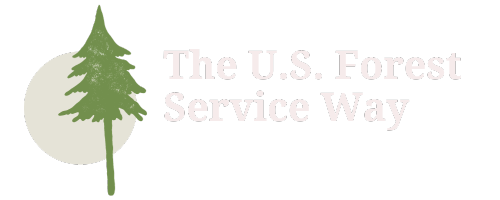James suggested Gifford visit Europe to learn about “scientific forestry,” a product of European Enlightenment. Gifford meets Sir Dietrich Brandis, who was trained in the Prussian Forestry culture, and was the retired Inspector General of Forests in British Colonial India. Since Gifford spoke French as well as he did English, Brandis suggested he enroll in the French school of forestry—the École Nationale des Eaux et Forêts—in Nancy, France. He wrote to his father and described Brandis as “splendid.” Pinchot became Brandis’s student assistant during his summer forest field tour of France, Germany, and Switzerland. Brandis played a role in shaping Pinchot’s view of what could be accomplished to bring scientific forestry to America. Letter after letter, he gave Pinchot advice, “You want a service of picked men, filled with enthusiasm for their profession and animated by a high feeling of honor. You want a strong and healthy esprit de corps to grow up among them. All this is impossible if you go to work to create a huge department at once.” Pinchot followed the advice, except for the last part. He was in a hurry.
Brandis advised Pinchot that the biggest threat to the Forest Service was corruption. He anticipated that in America, local Rangers and Forest Supervisors would be subject to bribes and favors that would destroy any chance of success. He suggested Pinchot’s family establish a school of forestry and hire European foresters, as he himself had done in British Colonial India. Pinchot knew this would not fly in America, but Brandis’s other advice he adopted to the American milieu.1 His father James endowed the Yale School of Forestry and dedicated his Milford estate, Grey Towers, to that end.
In Europe, Pinchot was most impressed with the Sihlwald, the municipal forest of Zurich, in democratic Switzerland. This municipal forest became a model of what forestry could be in America’s democratic society. He contrasted Switzerland with the Black Forest of Germany where the Ober Forester rode past the peasants as they dropped to their knees with hat in hand. Not an American (or post-revolutionary France) model.
Pinchot was anxious to get home and felt he had learned enough to declare himself a forester. He wanted to get back to America to put what he had learned to work. With his mentor’s reluctant blessing (“Pinchot, you are only half trained”), GP left Nancy for home and hung out a shingle as “forester” in New York City. Almost immediately, he got a job working in the Adirondack Mountains. He brought Yale classmate Henry Solon Graves along with him, and so began a lifelong partnership. The family connections sped the transition.
James’s fellow Century Club member, landscape architect Frederick Law Olmstead, hired Gifford to be the forester on the George Washington Vanderbilt’s estate in the mountains of North Carolina – Biltmore. It does not take him long to make a name for himself.
In 1898, Secretary of Agriculture, James Wilson, convinced Pinchot to take over the Division of Forestry, which had been headed by Prussian-trained forester Bernhard Fernow. At first, he said no. But Wilson sweetened the deal – “you can pick your people and I will not interfere.” Pinchot brought Henry Graves with him, and with just eleven people, the Forest Service took root. Pinchot soon began receiving Brandis’ letters of instruction. The real German approach comes out, and at times, it was a bit annoying. But he very carefully adopted and shaped Brandis’ teaching. In his book Gifford Pinchot and the Making of Modern Environmentalism, Char Miller describes Pinchot’s European experience in detail. Gifford did not like the other forestry students’ “obsession” with drinking and burlesque houses. He found it degrading and beneath a forester. His puritanical attitude may have carried over in some respects, but not others. Pinchot was “dry” and did not drink alcohol-a characteristic that did not transfer to the Forest Service, thank goodness. However, the Forest Service became forever rooted with Pinchot’s insistence on foresters maintaining a strong underpinning of ethics and depth of personal character– the two most important criteria for early leaders.
- See, Steve Anderson, “Forestry by Correspondence: An 1997 Letter from Dietrich Brandis to Gifford Pinchot,” Forest History Today, spring/fall 2005. Brandis writes Pinchot almost weekly. An example is long instruction letter dated 1897 – when Pinchot first starts work in the US. It includes page after page of detailed instruction on what to do and how to do it. “A competent man for the appoint of Chief Forest Officer will be necessary from the beginning, and at the outset he ought to have an assistant. The work to be accomplished by him will often require his absence from Headquarters, he will have to personally superintend the organization of the business in the first forest districts that will be taken in hand. And during his absence or during the absence of his assistant, either one or the other must be present at Headquarters.” This is what Pinchot does. Enter Harry Graves, and after Graves departs to run the Yale School of Forestry, Overton Price. ↩︎
